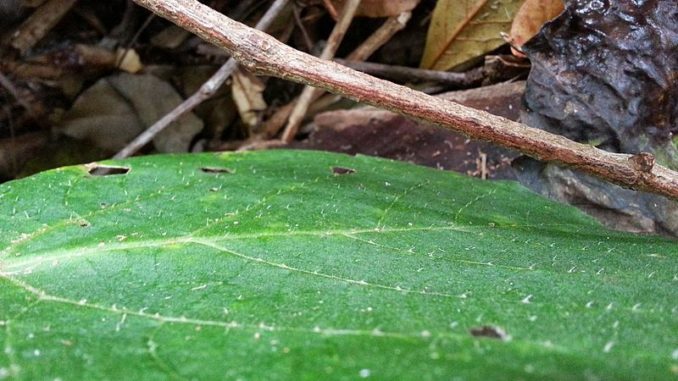
As if it wasn’t enough that a multitude of animals in and around Australia pack a toxic sting, it seems that nature has given several plant species in the region a venomous wallop as well.
University of Queensland (UQ) scientists have recently discovered that the giant Australian stinging tree (Dendrocnide excelsa) injects anyone, who so much as brushes the leaves, with a neurotoxin molecularly similar to scorpion, spider, and cone snail venom. In other words, it’s some of the most poisonous stuff in the world for which there is no anti-venom. The UQ researchers named the freshly-discovered toxin ‘gympietides’ after ‘gympie-gympie’, an Indigenous name apparently applied to all native stinging trees and bushes. The researchers say that gympietides are an entirely new class of neurotoxin miniproteins.
There are 37 species of plants in the genus Dendrocnide, a word which directly translates as ‘stinging tree’, although only some are considered trees, and others are considered bushes. Dendrocnide is part of the Urticaceae family, which includes all nettles in the plant kingdom. Nettles in Europe and North America are cousins to Dendrocnide, but lack the neurotoxicity. While nettles here in America and in Europe can sting, the pain is brief. The pain inflicted by gympietides can last days, weeks, or even months. It’s said that being stung by gympie-gympie initially feels like your skin is on fire, but after a while only feels like the appendage has been slammed in a car door. In later stages of the experience, the pain will all come back again if the skin is washed with water, or brushed up against something.
All 37 species of Dendrocnide are known to sting, but it has not yet been shown that they all possess the neurotoxin gympietides. The bush Dendrocnide moroides (common name gympie-gympie) is a likely candidate to share the neurotoxin with Dendrocnide excelsa, as it is well-known to all Australians as a plant to strictly avoid.
Like other stinging plants such as nettles, the giant stinging tree is covered in needle-like appendages called trichomes that are around five millimetres in length — the trichomes look like fine hairs, but actually act like hypodermic needles that inject toxins when they make contact with skin.
Dr. Irina Vetter, Institute for Molecular Bioscience, University of Queensland
Scientific classification
Kingdom: Plantae
Clade: Tracheophytes
Clade: Angiosperms
Clade: Eudicots
Clade: Rosids
Order: Rosales
Family: Urticaceae
Genus: Dendrocnide
Species: D. excelsa
Binomial name: Dendrocnide excelsa
Common name: giant Australian stinging tree
From the Institute for Molecular Bioscience, University of Queensland,
“Native stinging tree toxins match the pain of spiders and scorpions” (1:21):
Question of the Night: What is your favorite species from the plant kingdom?
